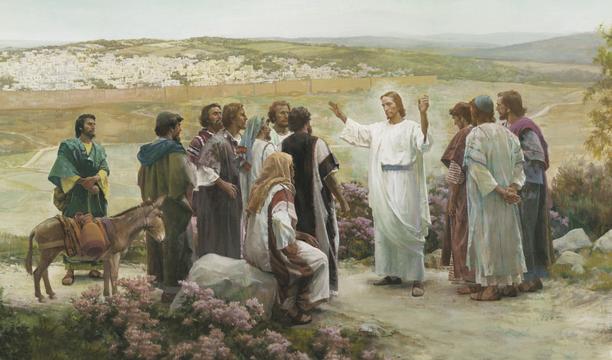Question
Dear Gramps,
Are the stories in the scriptures (like Adam and Eve, Noah’s ark etc.) always literal, or are some of them not literal but just illustrate true principles for the purpose of teaching?
Jordan
Answer
Dear Jordan,
I think that the safest course to pursue would be to consider the scriptures as literal accounts, unless it is an obvious illustration. For example, the parables of Jesus are often told as stories to demonstrate principles. Take, for instance, the parable of the prodigal son, found in Luke 15:11-24.
And he said, A certain man had two sons:
And the younger of them said to his father, Father, give me the portion of goods that falleth to me. And he divided unto them his living.
And not many days after the younger son gathered all together, and took his journey into a far country, and there wasted his substance with riotous living.
And when he had spent all, there arose a mighty famine in that land; and he began to be in want.
And he went and joined himself to a citizen of that country; and he sent him into his fields to feed swine.
And he would fain have filled his belly with the husks that the swine did eat: and no man gave unto him.
And when he came to himself, he said, How many hired servants of my father’s have bread enough and to spare, and I perish with hunger!
I will arise and go to my father, and will say unto him, Father, I have sinned against heaven, and before thee,
And am no more worthy to be called thy son: make me as one of thy hired servants.
And he arose, and came to his father. But when he was yet a great way off, his father saw him, and had compassion, and ran, and fell on his neck, and kissed him.
And the son said unto him, Father, I have sinned against heaven, and in thy sight, and am no more worthy to be called thy son.
But the father said to his servants, Bring forth the best robe, and put it on him; and put a ring on his hand, and shoes on his feet:
And bring hither the fatted calf, and kill it; and let us eat, and be merry:
For this my son was dead, and is alive again; he was lost, and is found. And they began to be merry.
My personal interpretation of that scripture is that it is a story told to effectively teach a principle. In Matt 13:10 the disciples asked the Savior why he taught in parables. If you look carefully over his answer, from verses 11 to 17, you will find that he spoke in parables to teach hidden principles to those who could perceive his meaning because of the influence of the Holy Spirit, but others, who were not worthy of that sacred influence, would hear only a story.
Apart from parables, however, there are accounts of particular happenings and accounts of historical significance. For instance, in chapter 21 of the Gospel of John, we are told that at the Savior’s command 153 fish swam into the net of the fishing disciples. I believe that is a factual account, and that there were not 152 fish, nor 154 fish that swam in to that net, but 152. To my mind, the historical accounts relate true events, not fantasies; and if such events cannot be explained by the science of today, that merely indicates the limitations of today’s science. It is surprising to me how foolishly prone men are to become the judges of God.
Gramps







